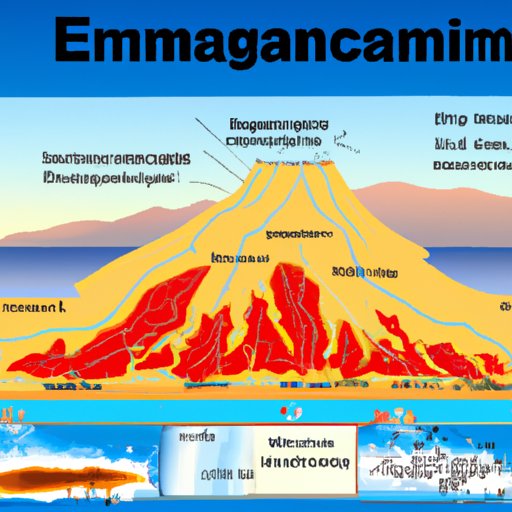Introduction
A tsunami is a large wave or series of waves caused by an underwater disturbance, such as an earthquake, landslide, volcanic eruption, or meteorite impact. Tsunamis are often referred to as tidal waves, although they have nothing to do with tides. They can travel across entire ocean basins and cause devastation when they hit land.
Tsunamis can occur anywhere in the world’s oceans and seas, but some areas are more prone to them than others. This article will explore where tsunamis most commonly occur by looking at the geographical locations that are at risk.
Examining the Geographical Locations Most Prone to Tsunamis
In order to identify the areas most prone to tsunamis, it is necessary to first understand the factors that contribute to their occurrence. These include plate tectonics, earthquakes, landslides, and volcanic eruptions.

Investigating the Factors That Contribute to Tsunami Occurrences
Plate tectonics refers to the movement of the Earth’s plates, which form the outermost layer of the planet’s crust. When two plates collide, they can cause earthquakes, which can trigger tsunamis. Earthquakes that occur beneath the sea floor can also cause tsunamis.
Landslides, either on land or in the ocean, can displace large amounts of water, which can create a tsunami. Similarly, volcanic eruptions can produce huge amounts of ash and debris that can be swept away by water and cause a tsunami.

Exploring the Areas With a High Frequency of Tsunami Events
The Pacific Rim countries, including Japan, Indonesia, and the Philippines, are particularly prone to tsunamis due to their location on the “Ring of Fire”, an area of frequent seismic activity. The Mediterranean region is also at risk for tsunamis due to its location near multiple major fault lines. The Indian Ocean is another area that is prone to tsunamis, especially after the 2004 Sumatra-Andaman earthquake.
Comparing and Contrasting Where Major Tsunamis Have Hit in the Past
Recent examples of devastating tsunamis include the 2011 Japanese tsunami, the 2004 Indian Ocean tsunami, and the 2010 Chilean tsunami. All of these tsunamis were triggered by powerful earthquakes. Historical data shows that tsunamis have caused destruction in many parts of the world, including Greece, India, China, and the United States.

Analyzing Historical Data to Determine Where Tsunamis are Most Likely to Occur
By looking at historical data, it is possible to examine patterns in where tsunamis are most likely to occur. For example, certain areas may be prone to higher frequency of tsunamis due to their proximity to fault lines or other geological features. By understanding these patterns, it is possible to develop strategies for prevention and response.
Conclusion
This article has explored where tsunamis most commonly occur by looking at the geographical locations that are at risk. Plate tectonics, earthquakes, landslides, and volcanic eruptions are all factors that can lead to tsunami formation. Areas with a high frequency of tsunami events include the Pacific Rim countries, the Mediterranean region, and the Indian Ocean. By analyzing historical data, it is possible to determine where tsunamis are most likely to occur and develop strategies for prevention and response. Educating the public about tsunamis and being prepared for them is essential in order to minimize their destructive effects.


